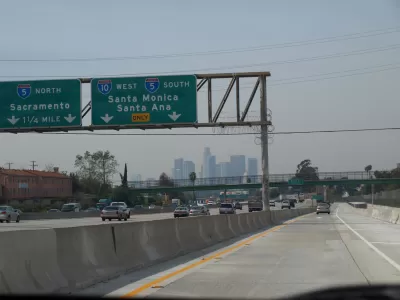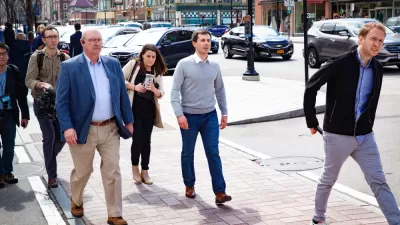The U.S. Department of Transportation nominee acknowledged the impact the interstate highway system has had on communities of color and vowed to mitigate the damage.

In a tweet following his statement accepting President-elect Biden's nomination for Secretary of Transportation, Pete Buttigieg promised to right the wrongs of the past, acknowledging that "Black and brown neighborhoods have been disproportionately divided by highway projects or left isolated by the lack of adequate transit." Buttigieg signaled that the Biden administration will seek to undo the damage done by prior federal policies and focus new efforts on ensuring more equitable outcomes.
The interstate highway system, one of the federal government's largest and most far-reaching transportation projects, has shaped the fate of cities with a heavy-handed, top-down approach that has isolated and displaced communities, impeded economic growth, and created public health crises in adjacent neighborhoods. Dismantling freeways is just one piece of the puzzle in undoing the damage of downtown expressways. New programs must work to restore affected communities without creating more burdens for Black and brown communities, writes Aaron Short. To achieve their goals and begin to address the decades-long structural effects of highway construction, the new administration will have to drastically shift federal funding for transportation infrastructure and ensure future policies put equity considerations first.
Urban planner Chris Sensenig, cited by Short in the source article, is optimistic that Buttigieg will deliver on his promises: "If the infrastructure bill is crafted to advance more than just the political interests of the few, we would hope that it would lead to investing in projects that further social and environmental justice issues."
FULL STORY: Nominee Buttigieg Vows To Dismantle ‘Racist’ Freeways

Planetizen Federal Action Tracker
A weekly monitor of how Trump’s orders and actions are impacting planners and planning in America.

San Francisco's School District Spent $105M To Build Affordable Housing for Teachers — And That's Just the Beginning
SFUSD joins a growing list of school districts using their land holdings to address housing affordability challenges faced by their own employees.

The Tiny, Adorable $7,000 Car Turning Japan Onto EVs
The single seat Mibot charges from a regular plug as quickly as an iPad, and is about half the price of an average EV.

With Protected Lanes, 460% More People Commute by Bike
For those needing more ammo, more data proving what we already knew is here.

In More Metros Than You’d Think, Suburbs are Now More Expensive Than the City
If you're moving to the burbs to save on square footage, data shows you should think again.

The States Losing Rural Delivery Rooms at an Alarming Pace
In some states, as few as 9% of rural hospitals still deliver babies. As a result, rising pre-term births, no adequate pre-term care and "harrowing" close calls are a growing reality.
Urban Design for Planners 1: Software Tools
This six-course series explores essential urban design concepts using open source software and equips planners with the tools they need to participate fully in the urban design process.
Planning for Universal Design
Learn the tools for implementing Universal Design in planning regulations.
Smith Gee Studio
City of Charlotte
City of Camden Redevelopment Agency
City of Astoria
Transportation Research & Education Center (TREC) at Portland State University
US High Speed Rail Association
City of Camden Redevelopment Agency
Municipality of Princeton (NJ)




























